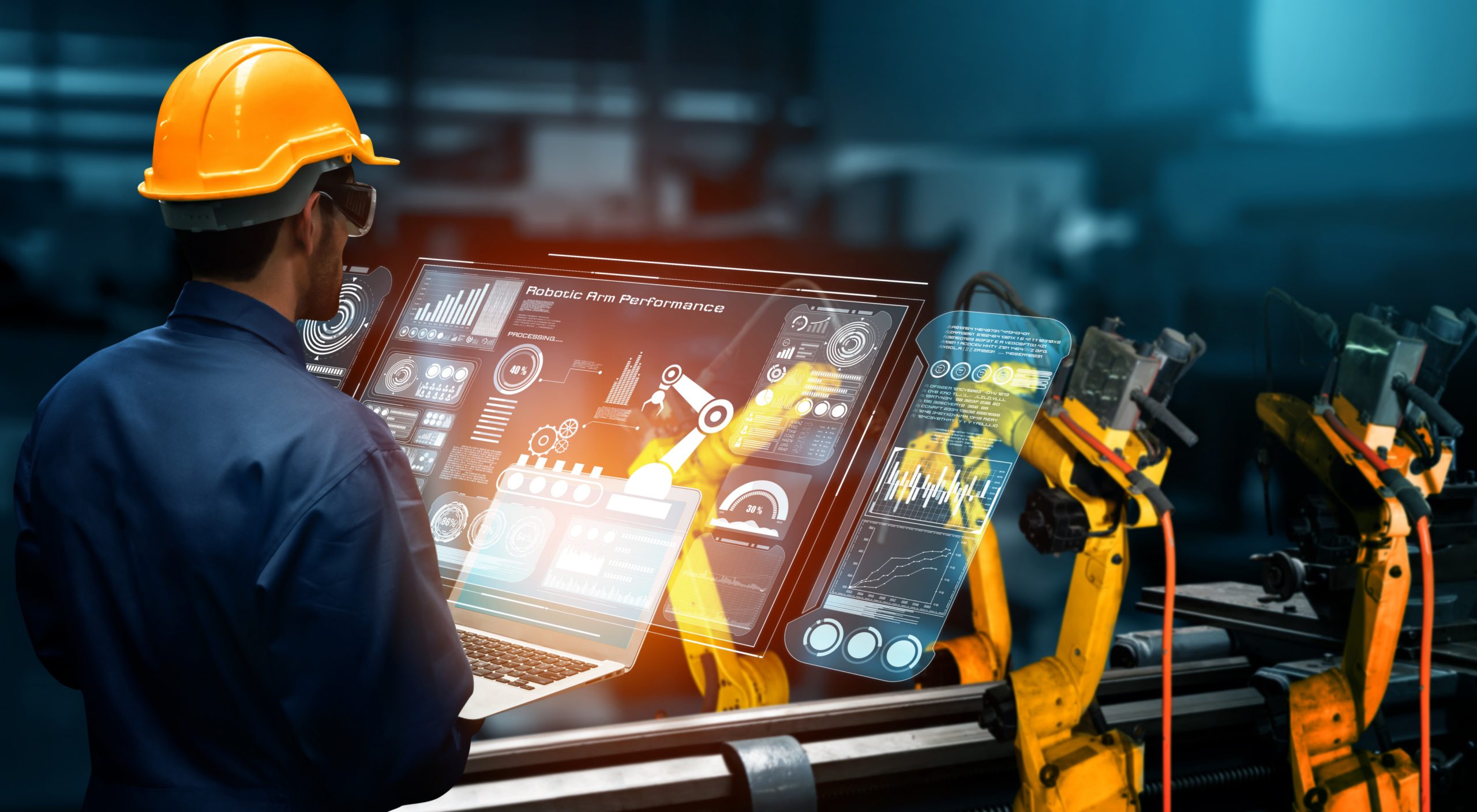Given the availability of a huge data pool, the manufacturing industry has started optimising areas that have the most impact on production activities with a data-driven approach. With access to real-time shop floor data manufacturing companies have the capability to conduct sophisticated statistical analysis using big data analytics and machine learning algorithms to find new business models, fine-tune product quality, optimise operations, uncover important insights and make smarter business decisions.
In manufacturing, Machine Learning and Big Data techniques are applied to analyse large data sets for developing approximations regarding the future behavior of the systems, detect anomalies and identify scenarios for all possible situations.
In this blog article, we take a look at how big data analytics and machine learning are transforming the manufacturing sector.
Predictive Maintenance
It is well understood that maintenance done at the right time reduces costs. One of the most impactful applications of Machine Learning in manufacturing has been that of predictive maintenance.
The Industrial Internet of Things (IIoT) market is standing at an estimated $11 trillion and predictive maintenance can help companies save almost USD$ 630 billion over the course of the next 15 years. Machine Learning can provide valuable insights into the health of the machines and predict if a machine is going to experience a breakdown. This information can help companies take preventive measures instead of reactive measure and shorten unplanned downtime, excess costs and long term damage to the machine. Enterprises can leverage Machine Learning algorithms to analyse sensor data to improve the Overall Equipment Effectiveness (OEE) by improving equipment quality and the entire product line along with boosting shop floor and plant effectiveness.
Preventive Maintenance or Condition Based Monitoring
Given that manufacturing enterprises have a large install base of machines, they need to ensure that machinery does not break down when they need it most. With Preventive Maintenance or Condition Based Monitoring, they try to maintain the equipment in optimum working condition and prevent any unplanned downtime by detecting equipment failures before they happen and fixing them within stipulated time. Preventive Maintenance is a process of continuous machine monitoring where by using pre-defined parameters, patterns that indicate equipment failure can be tracked and machine failure predictions can be made on time. Condition Monitoring ensures that an equipment is running or is maintained by iterating parameter variances that are constantly monitored..
Quality Control
In today’s regulatory landscape product quality is of paramount importance. Most manufacturers say product quality defines their success in the eyes of their customers. They constantly seek ways to reduce waste and variability in their production processes to improve efficiency and product quality. Leveraging principles of advanced big data analytics and machine learning concepts, manufacturing companies can capture sensor data from shop floor tools and equipment to take an increasingly granular and enterprise-wide approach to quality control. In addition, manufacturers will also be able to identify defects, uncover the root cause of problems, reduce the risk of shipping non-conforming parts, enable engineering improvements and determine which factors, processes, and workflows impact quality.
Effective Supply Chain Management
McKinsey predicts machine learning will reduce supply chain forecasting errors by 50% and reduce lost sales by 65% with better product availability.
Supply chains are the lifeblood of any manufacturing business. Big data analytics and machine learning algorithms can help manufacturing companies assess the state of the supply chain and drive efficiencies with inventory optimization, demand planning, supply planning, operations planning, logistics etc.
This allows manufacturers and suppliers to partner in a real-time environment to prevent keeping safety stocks levels high, adjust inventory positions to ensure that the right inventory is positioned at the right location to service customers better and prevent stock-outs, and also improve transportation logistics.
Optimization of Operations
A Gartner survey on the projected use of manufacturing analytics over next two years showed that 88% of companies plan on utilising data metrics to improve manufacturing responsiveness, 81% to improve capacity utilisation, 74% to understand their true costs, and 75% to make faster and better decisions.
By making real-time adjustments manufacturing companies can optimise the operational efficiency of manufacturing assets. This involves managing production capacity by having a real-time view of equipment performance and production processes, along with identifying assets locations, including those of products and people. By leveraging machine learning and advanced analytics enterprises can assess demand forecasts and other parameters such as future raw material costs, the cost of manufacturing and distribution, working capital analysis etc. It directly helps in improving the quality of Sales and Operations Planning by supply chain network optimisation.
Improvement of After Sales Service
Manufacturers are coming to understand that their actions after making sales are as important as the efforts they put into preparing for the sale, which all has an increasingly significant impact on their company’s financial performance. A recent study found that 27% of manufacturing companies’ total revenues came from service. Another report suggested that an average gross margin of 39% could be attributed to after-sales service. Undeniably, high-quality service is important to obtaining financial success.
Therefore,manufacturers will move away from using outdated technologies and business practices for inventory and after-sales management that provide little visibility and control. They will need to utilise predictive analytics to optimise their after-sales service and product parts business performance to improve customer loyalty, save time, and reduce costs.
Customisation of Products
The power shift from manufacturers to consumers described earlier is also driving investment in product customisation capabilities that are largely made possible by advancements in big data usage, machine learning and advanced analytics. When manufacturers provide tailored products, consumers provide extensive data about their preferences and behaviours that manufacturers can use to inform future product development. Big data analytics then allows companies to analyse customer behavior and develop methods of delivering products in the most timely and efficient way possible.
We will thus see manufacturers moving data out of silos and creating a data ocean of customer information with the goal of becoming more agile and responsive in making products to individual requirements both in B2C and B2B environments. This contrasts with the traditional focus on providing high throughput, low variability, and mass production.
Evidently, Machine Learning algorithms are creating a positive impact on the company bottom lines by creating new opportunities and helping them with greater process optimisation, increased predictive accuracy along with reduced time and resource wastage by drawing a significant value from the Big Data that lies at their disposal.









